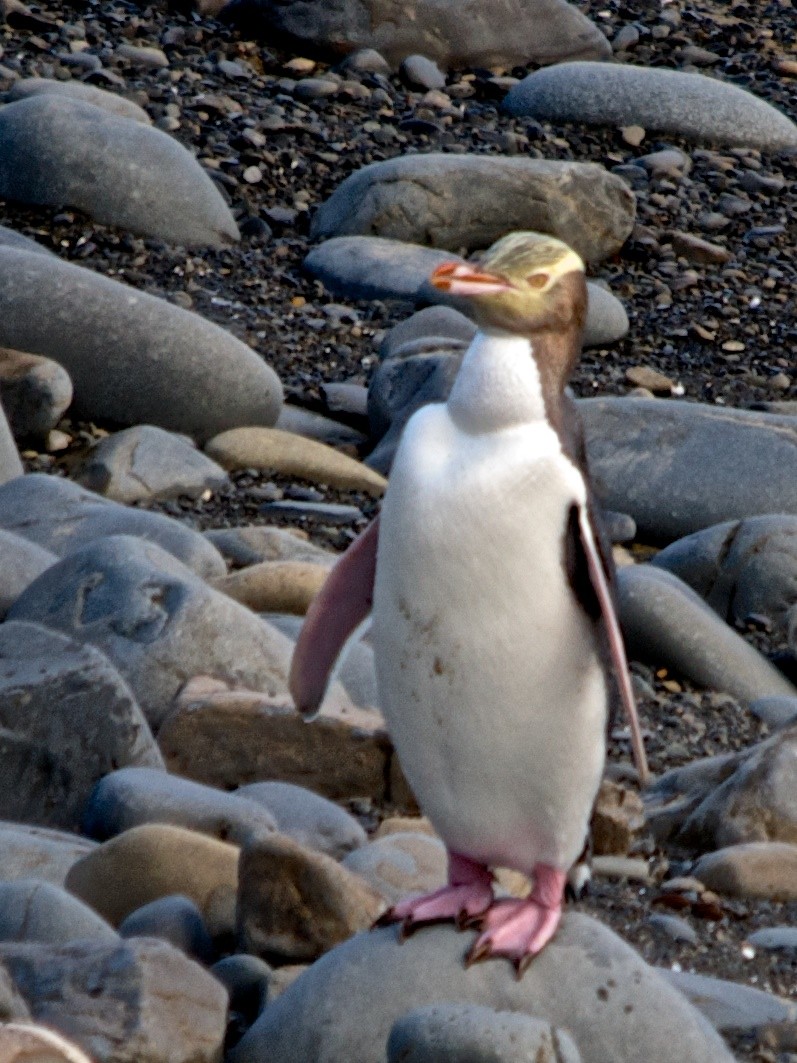Yellow-eyed Penguin
A species of Yellow-eyed Penguins, Also known as Hoiho Scientific name : Megadyptes antipodes Genus : Yellow-eyed Penguins
Yellow-eyed Penguin, A species of Yellow-eyed Penguins
Also known as:
Hoiho
Botanical name: Megadyptes antipodes
Genus: Yellow-eyed Penguins
Content
Description People often ask General Info
Description
The yellow-eyed penguin (Megadyptes antipodes), known also as hoiho or tarakaka, is a species of penguin endemic to New Zealand. Previously thought closely related to the little penguin (Eudyptula minor), molecular research has shown it more closely related to penguins of the genus Eudyptes. Like most other penguins, it is mainly piscivorous. The species breeds along the eastern and south-eastern coastlines of the South Island of New Zealand, as well as Stewart Island, Auckland Islands, and Campbell Islands. Colonies on the Otago Peninsula are a popular tourist venue, where visitors may closely observe penguins from hides, trenches, or tunnels. On the New Zealand mainland, the species has experienced a significant decline over the past 20 years. On the Otago Peninsula, numbers have dropped by 75% since the mid-1990s and population trends indicate the possibility of local extinction in the next 20 to 40 years. While the effect of rising ocean temperatures is still being studied, an infectious outbreak in the mid 2000s played a large role in the drop. Human activities at sea (fisheries, pollution) may have an equal if not greater influence on the species' downward trend. 
Size
76 cm
Colors
Black
Yellow
Gold
Gray
White
Blue
Life Expectancy
8 years
Nest Placement
Ground
Feeding Habits
Yellow-eyed Penguin primarily consume fish, including demersal species and sprats, supplemented with cephalopods, and opportunistically target fish larvae around jellyfish. Yellow-eyed Penguin forage benthically, diving to the seafloor, with day-long or short evening trips within 25 km of their nest.
Habitat
Yellow-eyed Penguin is a temperate terrestrial bird, favoring coastal forests and dense vegetation near the shore. They often breed in sloping terrain, gulleys, or cliff tops. Their marine habitat extends to shallow coastal waters where they forage, usually remaining inshore within their broader habitat of temperate oceanic regions.
Dite type
Piscivorous
People often ask
General Info
Feeding Habits
Bird food type
Species Status
The yellow-eyed penguin is considered one of the rarest penguin species in the world. It is listed on the IUCN Red List as being endangered. It was first included on the list in 1988 when it was listed as threatened. Its status has since been changed to endangered in the year 2000. It has an estimated population of 4000. The main threats include habitat degradation and introduced predators. It may be the most ancient of all living penguins. A reserve protecting more than 10% of the mainland population was established at Long Point in the Catlins in November 2007 by the Department of Conservation and the Yellow-eyed Penguin Trust. In August 2010, the yellow-eyed penguin was granted protection under the U.S. Endangered Species Act. 
Scientific Classification
Phylum
Chordates Class
Birds Order
Penguins Family
Penguins Genus
Yellow-eyed Penguins Species
Yellow-eyed Penguin 